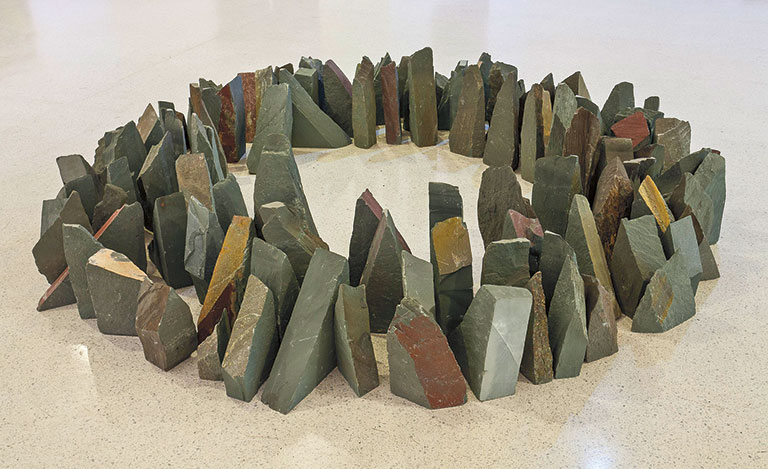
An essential part of Richard Long’s artistic practice is taking a walk.
The 79-year-old British land artist has strode across grassy fields in his native England, the glaciers of Iceland, the Australian bush, and to the summit of Mount Kilimanjaro. He sometimes documents these walks with drawings, poem-like “textworks,” or photographs of the worn path, as he did in 1967 with his conceptual piece A Line Made by Walking. Other times, he collects rocks and pieces of Earth as mementos of his journey, rearranging them into geometric shapes.
Elterwater Stone Ring, on view in Carnegie Museum of Art’s Scaife Galleries, includes 113 stones Long gathered from his walks in the mid-1980s around Elterwater, a small village located in northwest England’s Lake District. It is a mountainous region known for its large slate quarries and agriculture, and it’s a popular tourist destination for “fell-walkers”—hikers drawn to hills.
The angular Elterwater stones stand on end and vary in size, but most are below knee height on an average human. They’re arranged in a 2-foot-thick ring that is 9 feet in diameter, assembled into a kind of monument to the landscape from which they came.
The jagged edges contain earthy stains that pop from the slate gray—burgundy, cream, and olive. But they can’t be seen together from the same vantage, the way one might observe a canvas painting. The stones point at different angles and obscure details, tempting curious observers to move around the sculpture, taking a walk of their own.






